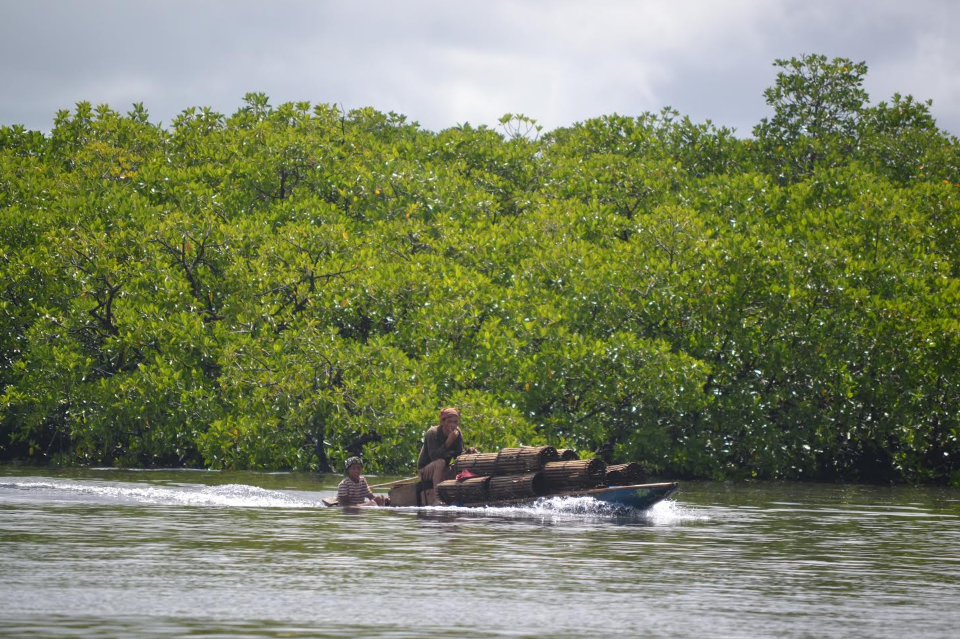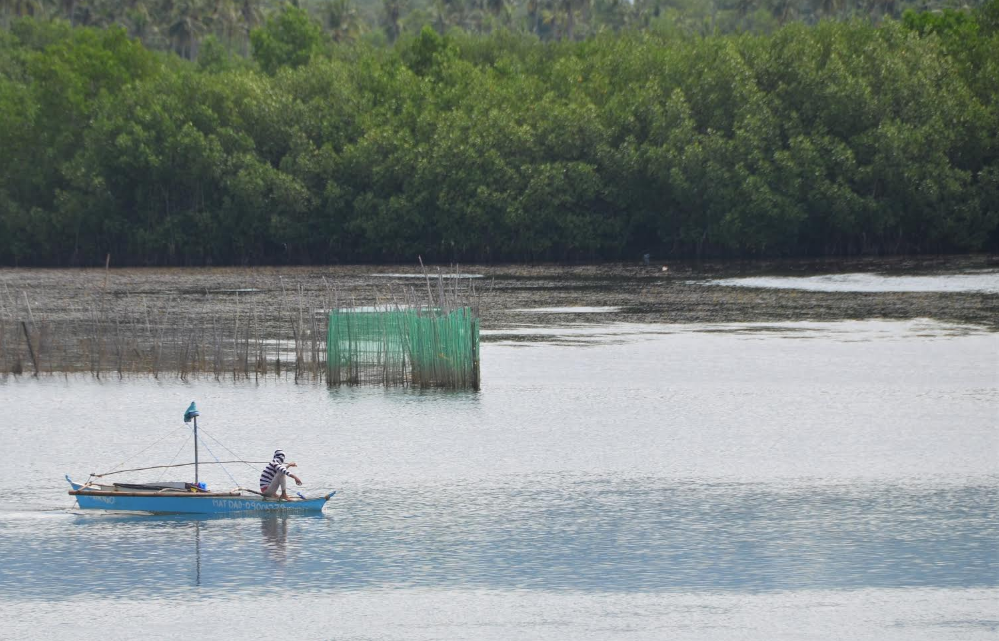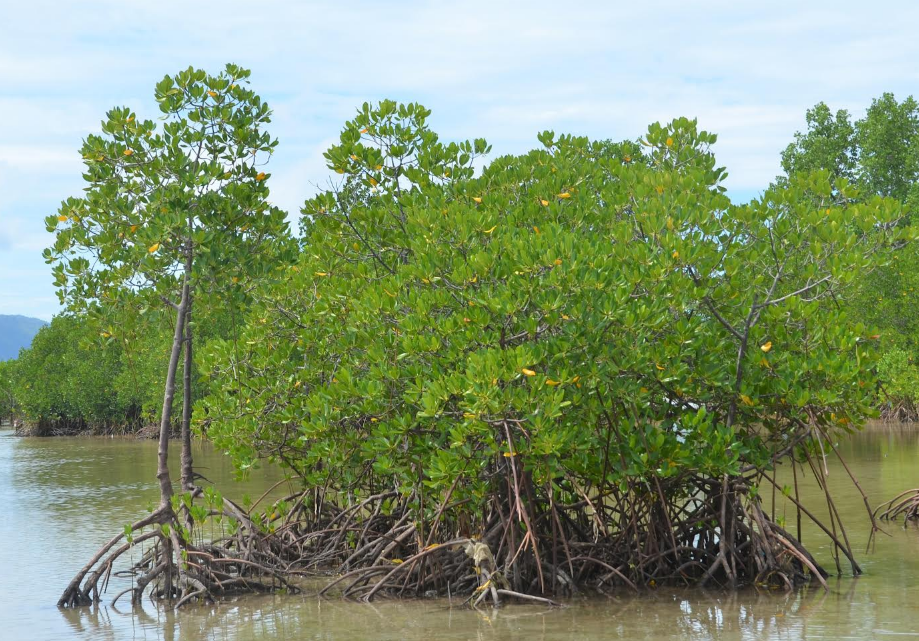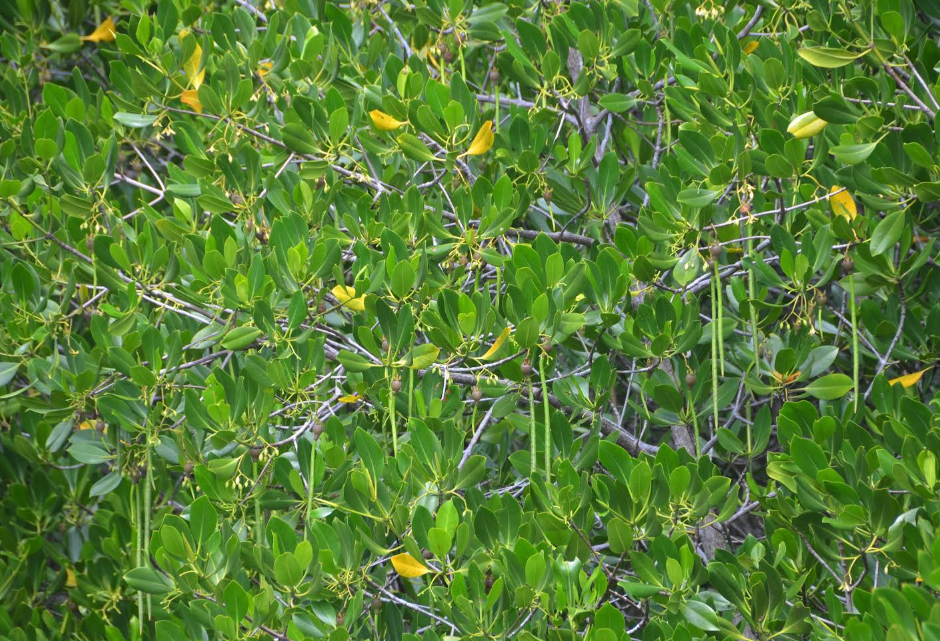Text and Photos by Henrylito D. Tacio
Last July 26, the Philippines joined the international community in celebrating the International Day for the Conservation of the Mangrove Ecosystem. The said celebration was adopted by the General Conference of the United Nations Educational, Scientific and Cultural Organization (UNESCO) in 2015.
The celebration is dedicated to raising awareness of the importance of mangroves as “a unique, special, and vulnerable ecosystem” and promote solutions for their management, conservation, and sustainable uses.
In his Facebook account, Dr. Severino G. Salmo III posted some of the important ecosystem services that mangrove forests provide.
First and foremost, “mangroves are a notable aspect of Filipino society.” In the Philippines, mangroves are known by several names: bakhawan in Tagalog, parakad in Ilocano, and katunggan in Bisaya, among others.
What most Filipinos don’t know is that many coastal communities around the country rely on mangroves as their source of income and protection against natural disasters like typhoons, floods, and tsunamis.
“We want people to see that mangroves have a value that extend further than what the public perceives,” wrote Dr. Salmo, an Associate Professor at the University of the Philippines Diliman. “They are one of the best ecosystems that can sequester (capture and store) carbon dioxide, a well-known greenhouse gas that contributes to global warming and an altered climate.
More importantly, mangroves “serve as an important habitat to the variety of marine species, giving refuge to our biodiversity,” he further said.


Mangroves are very important to marine life, agrees Dr. Rafael D. Guerrero III, an academician at the National Academy of Science and Technology. After all, mangroves serve as sanctuaries and feeding grounds for fish that nibble on detritus (fallen and decaying leaves) trapped in the vegetation and on the bark and leaves of living trees.
“(Mangroves) are important feeding sites for many commercially important fish species (mullet, tilapia, eel, and especially milkfish), shrimps, prawns, mollusks, crabs, and sea cucumbers,” a World Bank report on environment adds. “Fry that gather in mangrove areas are very important for aquaculture.”
Dr. Salmo also said: “(Mangroves) can filter wastewater discharged to our rivers and seas and have potential in the sustainable ecotourism industry.”
Yet, despite their importance, mangroves are not being protected as most people perceive mangroves as stinky and muddy areas. But “they sure are worth protecting,” Dr. Salmo stressed.
Mangroves may appear resilient, but they “are vulnerable to destructive human activities such as waste pollution and the conversion of natural mangrove stands to fishponds and other massive coastal reclamation projects.”
Mangroves, described as forests near the seas, are also “indirectly affected by human-induced climate change due to the strengthening of typhoons and rising sea level,” Dr. Salmo surmised.
Mangroves are found in tropical and subtropical regions, on the boundary between land and sea. Globally, they cover a surface of just 14.8 million hectares, or roughly equivalent to the size of Greece.
Unfortunately, more than three-quarters of mangroves in the world are now threatened, “and with them all the fine balances that depend on them,” said Audrey Azoulay, the UNESCO Director-General.
During the mangrove day celebration, she urged everyone “to become aware of the value, beauty, and vulnerability of mangrove ecosystems, and to commit to their protection.”
In a statement, Azoulay said: “From the intertwining roots to the tips of the branches, in a complex habitat, many species come to feed and reproduce, forming together one of the most flourishing ecosystems in existence. And we humans depend on these environments that slow down coastal erosion and are a source of food for many.”
From its original area of approximately 450,000 hectares in 1918, the mangrove areas in the Philippines went down to 140,000 hectares in 1991. It decreased further in 1994 to 120,000 hectares, according to Dr. Carmelita I. Villamor, when she was still with the Ecosystems Research and Development (ERDB).
“There are 25 to 30 species of true mangrove trees and an equal number of associated species,” says Dr. Miguel Fortes, one of the county’s experts on mangroves and seagrasses.


Dr. Theresa Mundita Lim, when she was still director of the Biodiversity Management Bureau (BMB), said BMB has identified 42 species of mangroves in the country. One of them, Campostemon philippinense, is listed by the International Union for Conservation of Nature (IUCN) as an endangered species.
The IUCN is also considering putting several others of the 70 mangrove species assessed on its Red List of Threatened Species.
Although human health has always depended on the health of the planet, Ms. Azoulay said the importance of mangrove systems is now increasingly clear.
“The world is now waking up to the importance of mangroves – and other blue carbon ecosystems, including salt marshes, seagrass beds and coastal wetlands,” she said.

